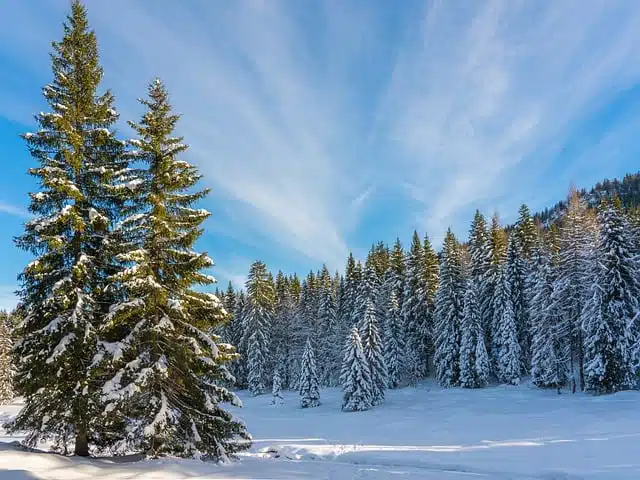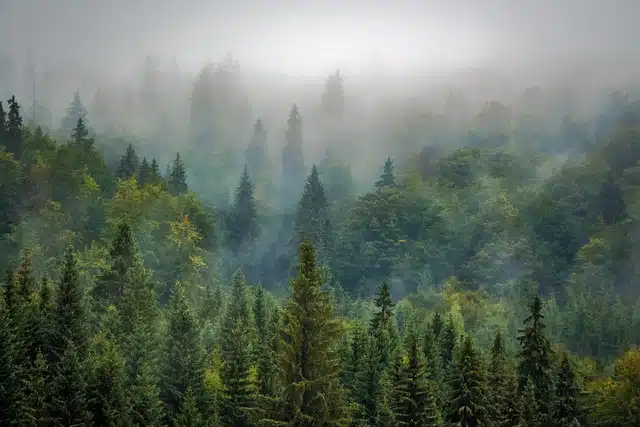
Conifers are trees and shrubs whose fruits and branches have a conical shape.
Conifers are shrubs and trees with branches that are conical in shape and fruits that also have a cone structure. These plants belong to the group of gymnosperms , which includes those species whose carpels, lacking a closed space to house the ovules, display the seeds exposed.
Plants called gymnosperms are seed producers and fall into the category of vascular (organisms that are made up of plant cells) and spermatophytes (the group of all vascular lineages that produce seeds). The etymology of its name takes us to the Greek expression "naked seed", which refers to the fact that they do not develop in a closed ovary, something that does occur in angiosperm plants.
coniferous forests
There are about six hundred species of conifers throughout the world. These trees often make up a coniferous forest , where specimens with evergreen and needle-like leaves predominate.
Boreal forests , also called taigas , are the most common coniferous forests. They are found in the northern hemisphere, in countries such as Russia and Canada , and have conifers such as pines , spruces and firs . In places with higher temperatures, coniferous forests often feature species such as redwoods , cedars , and cypresses .
When conifers are found in very cold regions, it is common for them to grow very tall and in the shape of a pyramid , since these characteristics allow them to detach themselves from the snow more easily. In dry climates, on the other hand, the most common conifers are those with needle-like leaves that help reduce evaporation.

Pine trees are coniferous.
Pines, sequoias and other species
Pines are among the best-known conifers. Various cultures attribute symbolism linked to strength and vitality to these trees. This is because they are perennial species, with the ability to grow and survive in arid environments.
The tallest conifers, on the other hand, are sequoias , which can exceed one hundred meters in height without taking into account the roots. Another peculiarity of sequoias is their longevity: there are specimens that live for nearly 3,000 years.
Among the conifers we find the genus Juniperus , widely distributed worldwide. The more than fifty species it comprises can be divided into two sections: junipers (which maintain thorny juvenile foliage throughout their lives) and junipers (which after the first few years lose their thorny juvenile foliage). Junipers can be found throughout the northern hemisphere and in much of the Central American mountains.
Conifers and animals
As with all families and species of plants, conifers have dozens of associated animal species that need them to survive and that also provide them with different benefits. An insect from the order of Lepidoptera (in everyday speech, they are simply known as butterflies ) is known as the pine processionary caterpillar . It is very abundant in the pine forests of South America and Southern Europe and is considered a relatively dangerous pest.
The pine processionary caterpillar also lives in fir and cedar trees, and has a very particular appearance: it is covered in hairs that come off and float in the air. Since these are stinging hairs, if they come into contact with the throat, nostrils or ears of humans, they can cause anything from mild irritation to serious allergic reactions. In the case of dogs, contact with this species can be fatal .
The hairs of the pine processionary have a substance called Thaumatopin (the scientific name of the species itself is Thaumatopoea pityocampa ), a heat-labile toxin that provides them with the ability to produce hives.
